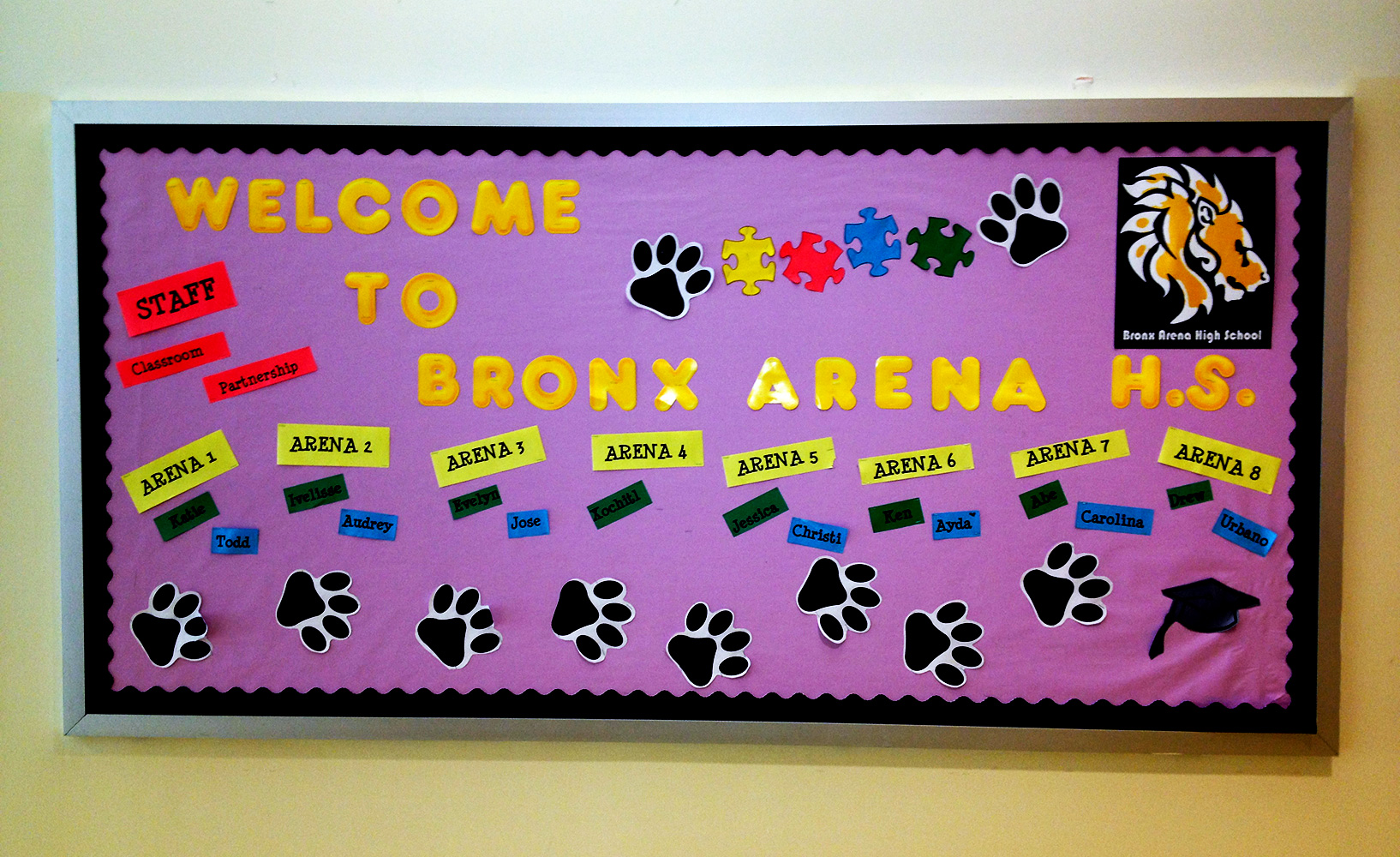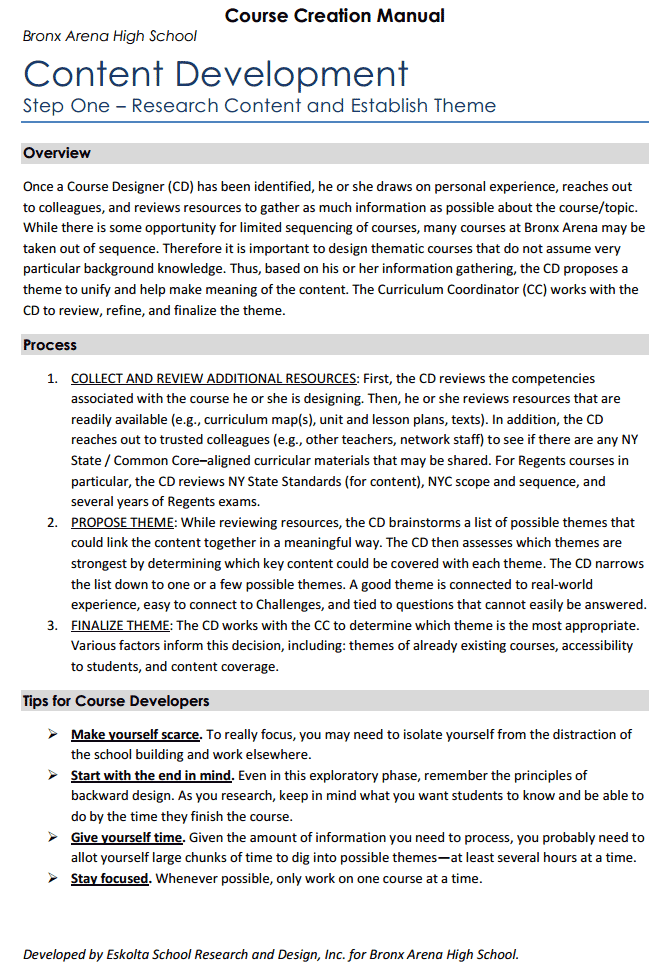What We Do: Design Projects >> Pathways to Success
The Blended Learning Model: Personalizing Curriculum at Bronx Arena High School
How can teachers effectively educate students performing at different levels within the same classroom? An increasing number of schools are adopting blended-learning models in which classroom-based teaching is integrated with online learning in order to meet disparate student needs. At Bronx Arena High School (BAHS), a transfer school in the impoverished Soundview neighborhood of the South Bronx, students enroll from an array of previous high schools with differing amounts of credits. One way Principal Ty Cesene has responded to meet diverse student needs includes using an online adaptive learning program. “I wanted to create a blended-model school that was a different experience from what these students had before,” Cesene said. “With blended learning, it’s easier for teachers to meet students where they’re at and create curriculum at the level of their needs.” Through blended-learning methods, students at BAHS are able to advance through subjects at an individualized pace and gain credits at their own speed.
The degree of planning that is required at BAHS is greater than that of traditional learning environments, as teachers must have every step mapped out before the course begins to accommodate the various trajectories of student coursework. Because every learning activity must be planned in advance, Eskolta worked with BAHS to balance the teacher’s need for flexibility within lessons and the existing structure of an online curriculum. In order to plan its blended-learning classes and curriculum, BAHS paired with Eskolta to develop a Course Creation Manual with the purpose of clarifying how courses were to be designed and vetted. Senior School Developer Jessica Furer worked directly with Ty Cesene, Neil Pergament, then a literacy coach at the school, and Samantha Sherwood, the assistant principal, to create the manual, which is now used as a blueprint for constructing courses at BAHS. “Our goal is to create a learning tool that helps Bronx Arena think through the process of designing its courses moving forward,” Furer said. She has facilitated discussions at BAHS focusing on what the steps should be in developing new courses and how to translate this work into a formal document.
Updated and continued use of the Course Creation Manual has been advantageous for BAHS. The manual’s impact is ongoing; its use has pushed the staff to think critically about and flesh out practices that were embedded within the school. Overall, the Course Creation Manual helped the school to identify practices that were already present but were not codified or consistently implemented schoolwide. One BAHS administrator noted that the Eskolta staff does a good job with “putting concept to paper,” rather than getting “wrapped up in a philosophical, conceptual space.” As a result, Eskolta’s action-oriented work style has allowed BAHS to concretely identify “actual things to do,” and establish clear consistency in terms of course development.


